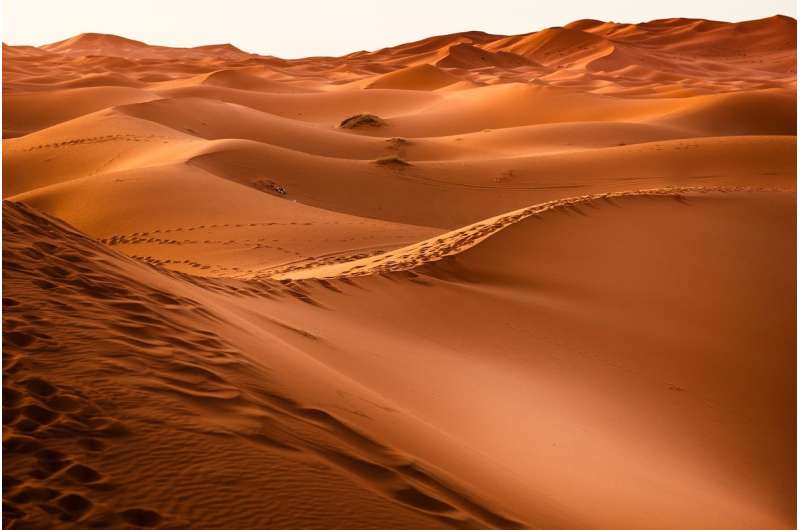Sahara dust may make you cough, but it's a storm killer

The bad news: Dust from the Sahara Desert in Africa—totaling a staggering 2 to 9 trillion pounds worldwide—has been almost a biblical plague on Texas and much of the Southern United States in recent weeks. The good news: the same dust appears to be a severe storm killer.
Research from a team of scientists led by Texas A&M University has studied Saharan dust and their work is published in the current issue of the Journal of Climate of AMS (American Meteorological Society).
Texas A&M's Bowen Pan, Tim Logan, and Renyi Zhang in the Department of Atmospheric Sciences analyzed recent NASA satellite images and computer models and said the Saharan dust is composed of sand and other mineral particles that are swept up in air currents and pushed over the Atlantic Ocean to the Gulf of Mexico and other nearby regions.
As the dust-laden air moves, it creates a temperature inversion which in turn tends to prevent cloud—and eventually—storm formation.
It means fewer storms and even hurricanes are less likely to strike when the dust is present.
"The Saharan dust will reflect and absorb sunlight, therefore reduce the sunlight at the Earth's surface," said Pan.
"If we have more frequent and severe dust storms, it's likely that we have a cooler sea surface temperature and land surface temperature. The storms have less energy supply from the colder surface therefore will be less severe."
The study goes on to show that dust and storm formation don't mix.
"Our results show significant impacts of dust on the radiative budget, hydrological cycle, and large-scale environments relevant to tropical cyclone activity over the Atlantic," said Zhang.
"Dust may decrease the sea surface temperature, leading to suppression of hurricanes. For the dust intrusion over the past few days, it was obvious that dust suppressed cloud formation in our area. Basically, we saw few cumulus clouds over the last few days. Dust particles reduce the radiation at the ground, but heats up in the atmosphere, both leading to more stable atmosphere. Such conditions are unfavorable for cloud formation."
Zhang said that the chances of a hurricane forming tended to be much less and "our results show that dust may reduce the occurrence of hurricanes over the Gulf of Mexico region."
Logan said that recent satellite images clearly show the Saharan dust moving into much of the Gulf of Mexico and southern Texas.
"The movement of the dust is there," Zhang said, "but predictions of dust storms can be very challenging."
More information: Bowen Pan et al, Impacts of Saharan Dust on Atlantic Regional Climate and Implications for Tropical Cyclones, Journal of Climate (2018). DOI: 10.1175/JCLI-D-16-0776.1
Journal information: Journal of Climate
Provided by Texas A&M University




















